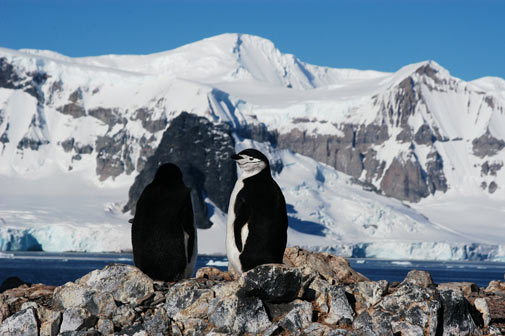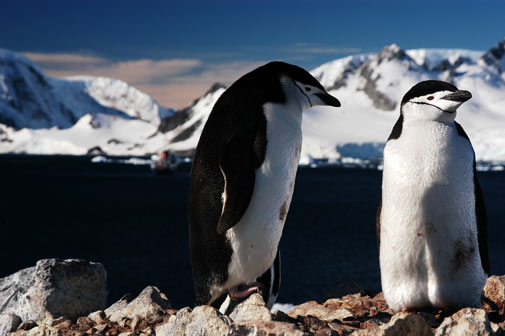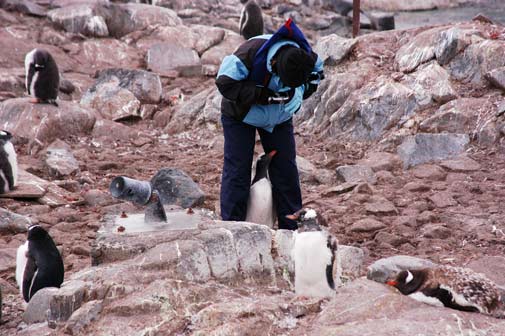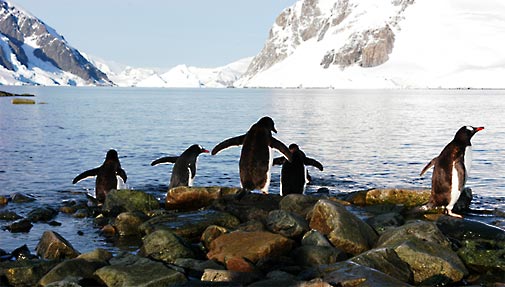This species lives in colonies scattered around the huge frozen surface.

Penguins are the usual dwellers of the Antarctic region and their behavior is observed at first sight.
These sea birds once lost their ability to fly. Their wings became atrophied and turned into fins. They became adapted to the water environment, where they are excellent divers. Seven penguin species inhabit this place: Emperor, Royal, Adélie, Chinstrap, Gentoo, Macaroni and Southern Rockhopper. In the water, they move around skillfully. On the beach, they are slow and gracious. As far as their physical traits are concerned, they feature different heights or details on their heads or necks. Their lifestyles, however, are practically the same.
Their bodies are covered with plumage that resembles scales. They usually have a white front and chest and a black back. They have a thick layer of fat under their skin, which isolates their bodies from extreme temperatures. All these characteristics enable them to get completely adapted to the sea environment. They change their plumage in the summer and therefore they spend more time on land than in the water.

Good Fellows
When the mating season comes, they make noisy colonies and use caves or dens in the rocks to build their nests. A few of them nestle directly in the rocks or far away from the sea shore. Only the Emperor and the Royal penguins lay their eggs between their own legs and warm it with their plumage.
Both members of the couple brood the eggs and then feed their young, which are covered with a greyish plumage when they are born. Grown-ups take turns to search for food in the sea (krill, squid and fish). Then they return to the nest. Not until the young penguins get their first plumage are they ready to enter the sea and search for their own food.

Leopard seals and orca whales are the natural predators of this species. Birds, especially skuas, lurk around with the hope that the parents might get distracted so as to take hold of the eggs and attack the chicks.
It is during the breeding season that the penguins are seen populating islands, hills and beaches on the Antarctic Peninsula.









Mónica Pons